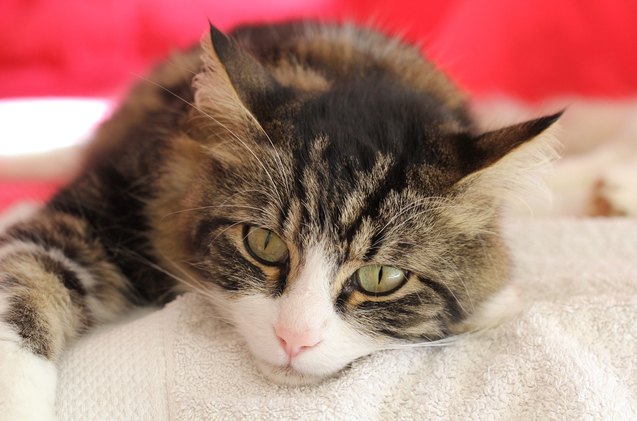Top 4 Most Common Cat Allergies

Cat allergies are surprisingly common, but if you know the most prevalent types of allergies in felines and what causes them, you can reduce your companion’s risk of ever having to deal with them.
To start, it’s important to understand what an allergy actually is. Essentially, it’s your cat’s immune system overreacting to an allergen that’s considered foreign and threatening to the body. Common symptoms of allergic reactions include coughing, wheezing, and sneezing, as well as skin conditions that result in itchiness and inflammation, and digestive issues that include gas, bloating, diarrhea, and vomiting. Targeting the cause of your cat’s allergies is the only way to properly treat them, eliminate them, and bring your pet much-needed relief.
Related: Things To Consider Before Feeding Your Cat Fish
Food Allergies
Food allergies can develop after years of eating the same ingredients every day. Many times, it’s the protein source, such as poultry or beef, that’s the culprit. And these types of cat allergies can occur at any age. One step that you can take to reduce the risk of a food allergy occurring in the first place is rotating protein sources on a daily basis. For example, feed poultry one day but beef the next, or alternate the protein sources between meals throughout the same day.
The symptoms that are most commonly associated with food allergies include respiratory issues, digestive problems, and itchy skin. If your vet feels that a food allergy may be the source of these health concerns, you may be required to put your cat on a hypoallergenic diet, or you may need to cut back on the ingredients that you’re feeding and then slowly add them in one by one until you find out what ingredient(s) are the cause of the allergies. This takes time but it’ll be worthwhile because you’ll be able to target the cause and eliminate the need for prescriptions like steroids that can cause side effects.
Related: Tailio Gives You The (Poop) Scoop On Your Cat’s Health
Flea Allergies
A flea bite will usually cause a minor amount of irritation and itching, but if your cat is allergic to flea bites, he’ll do everything he can to bring himself relief, including biting his own skin, potentially licking off patches of fur, and scratching at the source of the irritation so much that he can cause wounds that are susceptible to infection. The head, neck, and rump are the most commonly affected areas when it comes to flea allergies, and the scratching may result in scabs and sores on the skin.
Getting rid of fleas, especially if there is an infestation in your home, can be extremely difficult. Discuss your options with your veterinarian, as there are many potent flea medications available today that will help you get rid of the fleas on your cat, and you can also get the advice you need to get rid of the fleas in the environment so that they don’t end up reinfecting your cat.
Contact Allergies
Contact allergies are those that are caused by something in the environment that your cat has come into contact with. Bedding, particularly that which is made of wool, as well as carpeting, shampoos, and detergents are just a few examples of things that can cause contact allergies, though every cat is different and some will be more sensitive than others.
These allergies will manifest on the body wherever the contact was made, such as on the elbows, the side of the body, the bottoms of the feet, the face, or even the stomach. Itching and irritation of the skin will occur, but treatment is usually simple once you determine what the allergens are. Once you know what’s causing these allergies, all you need to do is remove the allergens from the environment.
Airborne Allergies
Airborne allergies are inhaled, and both indoor and outdoor allergens can be the culprits. For example, common household allergens include dust and mold or mildew. Outdoor allergens include grass pollen, tree pollen, and weed pollen. Indoor allergens, though, can take their toll year-round, whereas outdoor airborne allergens are typically seasonal. And, once again, these allergies will typically manifest as skin ailments on your cat.
Keeping your kitty inside with the windows closed and an air filter on is a great way to reduce cat allergies caused by pollens. Maintaining a clean home and making sure there isn’t any mold or mildew growing will reduce the incidence of indoor allergens. Again, the hardest part is targeting the source of the problem, but discussing these issues with your vet is your best bet for bringing your cat relief quickly.

Lisa Selvaggio is a freelance writer and editor, and our resident cats-pert, with certifications in pet nutrition and pet first aid. She enjoys producing content that helps people understand animals better so they can give their pets a safe and happy home.
More by Lisa Selvaggio






















